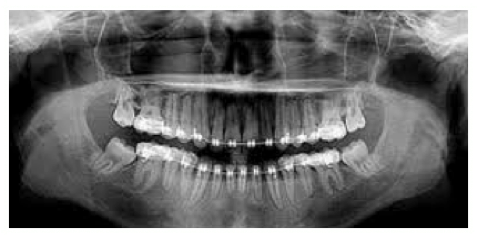
WEDNESDAY, FEBRUARY 2, 2011
DIGITAL X-RAY
We are really excited about a new x-ray technology upgrade we have here in our office. The new system uses digital sensors to acquire an image while using about a third of the radiation compared to the old film-based system.
The intra-oral images of small groups of teeth are acquired by using a small film-sized sensor like the ones in the inset above. A small wire attached to the sensor transmits the image to the office computer over the network. The old film based system took 5 minutes to process a film with a chemical processor; the digital images are available to view in just a few seconds with no need for a darkroom or chemicals.
You may have had a panorex x-ray at the dentist in the past like the image shown above. This large format film that shows all of the teeth and bones of the face in one picture and can be used to look for wisdom teeth among other things. The new panorex also uses a digital sensor that requires much less radiation to capture the image. The image is instantly available on the computer and can be enhanced by the software in much the same way as the intra-oral images.
Dental images are archived electronically as part of your dental record and can be viewed on a computer monitor. This allows the doctor and patient to go over the images together in a larger format that is easier to see. Unlike film, the images can also be enhanced by the software to highlight problem areas. Images are also easy to instantly send to a specialist like an oral surgeon or endodontist should the need arise. Digital x-ray is truly a new and improved way to find early decay and other dental problems.
Digital x-ray is faster, easier, and higher quality than the previous methods. The 60% reduction of radiation and the elimination of the chemicals needed to process film makes this new mode of diagnosis faster, safer, and greener too.


ASK THE DENTIST
Click the blue tooth to go back to the index...
